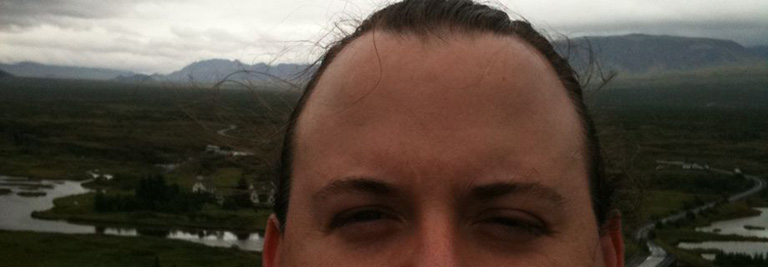

My first ambition was to become a physicist. However, my first passion was computer art. I was going to College at sixteen in pursuit of a future in Science. A was still rockin' my Commodore 64, but was detirmined to get my hands on 'a real computer'.
Computers had already captured my imagination well before Artistic expression seemed important to me. Then I discovered the Amiga. My Scientific ambitions faded as my interest in understanding the real world took a backseat to my new found ability to visualize made-up worlds.
The first eight years of my Career was spent in Motion Graphics, first in LA, then Austin Texas. Inspired by a new generation of production studios behind shows like Babylon 5, I built a Studio in Austin with friends and family. The work was mostly contract advertising production, but there was always a side element that did not quite fit.
I wrote and published two plugins for 3dsmax and contracted with Peak Performance of Englewood, Colorado to port their MOTUS motion capture system to 3dsmax as well. Kinecapture was a three month long development cycle followed by contract production of documentation and promotional videos. We followed up with a partnership in an Austin based Motion Capture facility.
Around 2000, I started taking contract work in the game industry. My first major gig was an asset fixing project for Ultima Online Third Dawn. They were reskinning the game for 3D and had oursourced the clothing to a company in Vietnam.
What they got back was visually correct, but technically broken. The only way to get the clothing to layer over the skin mesh without penetrating was to scale everything up. - Imagine everyone in the Ultima Universe in MC Hammer pants. I was there to fix stuff.
My first day, I quickly discovered that my joy for building stuff in 3D had been replaced with a dread of tedium. Seriously, who uses a computer to do the same rote actions over and over... Turns out, mostly every one. Madness, I tell you.
So, it had been a while since I had written plugins, or touched code at all, but we were up to 3dsmax 2.5 and Maxscript was fully armed and operational. Two weeks later, I had a batch processor, a handful of scripted operations, and a set of prepared pipeline best practices documents. Pipeline in hand, I call my Art Director into a meeting to show him the results. We had Game quality cloths. No penetrations. No MC Hammer pants.
I will never forget his response. "Thank you for bringing this in today Raymond. The results are great and this will be easy to push to the other Artists. And it couldn't come at a better time, because you haven't checked in anything in two weeks and I was going to let you go today."
That was the day I became a Technical Artist.
Pro-tip: Forgiveness is great, but permission is good too...
By 2009, I had advance through three product cycles on very large and technically challenging products, and distinguished myself with my contributions to prebaked destruction, look development, and shader pipeline development. Now it was time for new challenges.
I took on the role of Technical Art Director at CCP and began work establishing a Techart Culture and modernizing their Art Content pipelines. Faced with part of the the challenges of adapting an engine made for a space MMO to a third-person character driven product, asset integration had to be re-thought from the ground up.
Over the course of four years, I designed and executed a full replacement of their manual legacy asset pipeline to a fully hands-free automated data-driven pipeline and tool chain. The key goals of the system were...
Since that time, the bulk of my efforts have been devoted to Pipeline engineering and solving problems associated with asset Dataflow and Automation with a particular focus on interdependency and product life-cycle